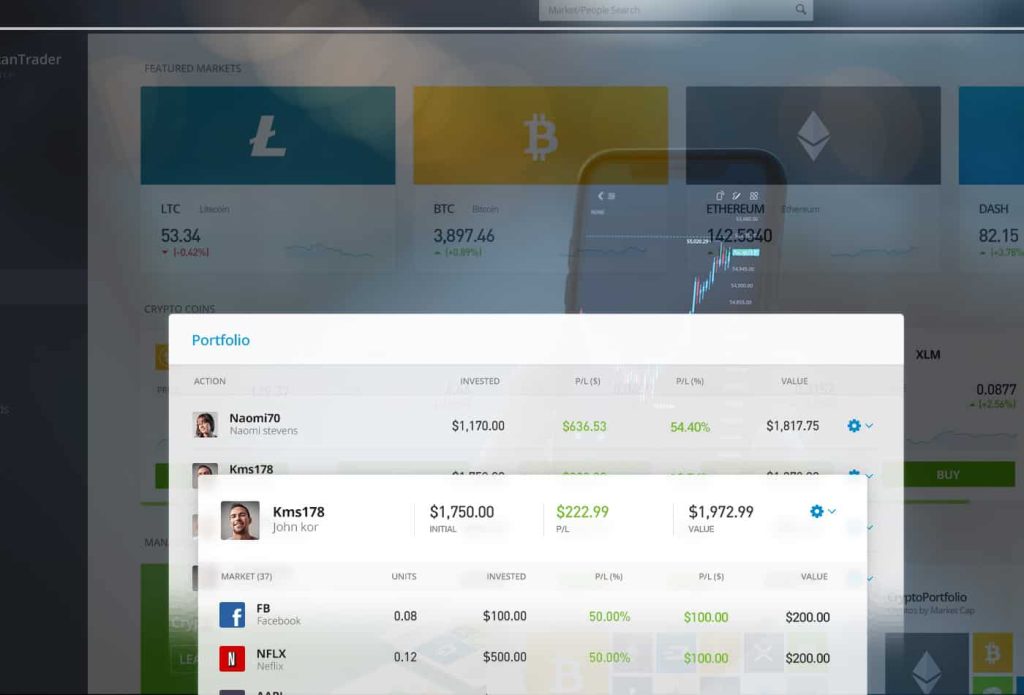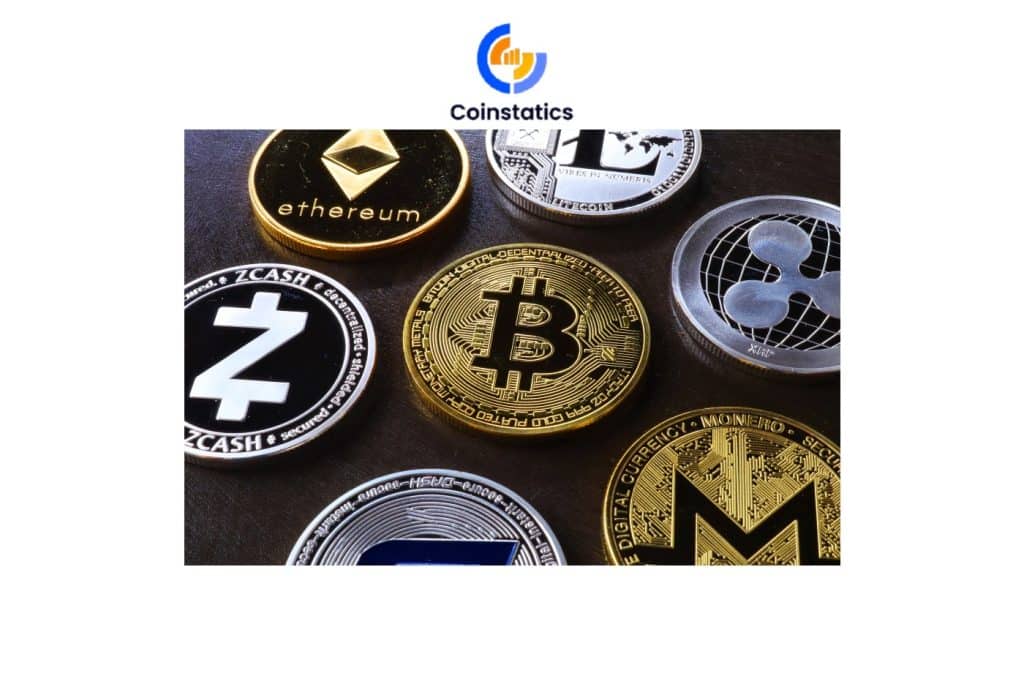This article was last updated on June 10, 2022
If we have to pick one crypto network that is seeing the most adoption amongst enterprises it is VeChain. It essentially allows companies to track their products and give them unique identities, making counterfeiting such companies’ items highly unlikely. Or rather, if a product is counterfeit, you can track and see that, using official data. If that got your interest, or you are already wondering how to buy VeChain, we cover all the necessary information below.
If you are new to the crypto space, we suggest checking out our beginner’s crypto guide.
It is quite important to be well-familiar with a crypto network, before investing in it. We cover all the necessary information about VeChain in this article. However, it is also a good idea to do your own research (DYOR) if it further impresses you.
The reason VeChain is so popular and never goes out of the top 50 cryptocurrencies by market cap is how unique it is. VeChain has no direct competitor, meaning they are in their own niche. When looking at projects to invest in, it is always a good idea to find one that is performing well, with less competition.
Aside from that, knowing a token’s price history helps you understand the ups and downs it went through and what you can expect in the future. Due to the current situation and many political and military issues around the world, the crypto market is seeing an enormous crash, which is completely understandable.
So without further ado, let’s explore how VeChain works, its history, a price analysis, and where to buy it from.
How To Buy VeChain (VET) – Summary
Follow these simple steps, and you will understand how to buy VeChain:
- Find a cryptocurrency exchange that offers VeChain.
- Open an account with the platform.
- Fund your account.
- Buy VeChain.
- (Optional) Transfer purchased VeChain to external wallet.
This is a quick and short guide of the extensive guide we have in a later section. To get there, navigate through the table of contents.
Table of contents
What Is VeChain
VeChain is a blockchain ecosystem developed to help keep track of what happens at all stages of the supply chain, making management easier. It helps determine whether or not a real-life product is original or fake. How it does that is by combining physical tracking with blockchain technology, giving each product its unique identity.
This prevents counterfeit products from being sold to the public without their knowledge. The platform’s been adopted by many enterprises and corporations, allowing them to track and manage their supply. Such products can be anything from clothes to wine, to car parts, to online content, etc.
Of course, this naturally translates into customers resting at ease when purchasing an expensive product, that can be counterfeited.
All of this utility makes VeChain perfect for further corporative adoption, as it is particularly useful for overall logistics and supply tracking.
The ecosystem has two native tokens – VeChain (VET) and VeChainThor (VTHO) – and supports smart contracts. You will often see people refer to the network as a “dual-token ecosystem”. The VeChainThor is in fact the public blockchain that runs the VeChain ecosystem, including both VET and VTHO.
VET is essentially the payment & staking currency of the network, while VTHO is used as a form of “gas” or energy, powering smart contract transactions.
Other blockchains can use the platform to launch their own cryptocurrencies in a similar fashion as how you can do on the Ethereum blockchain. This naturally assists VeChain to get into the world of Dapps.
The network uses a Proof-of-Authority (PoA) algorithm, that helps make swift transactions through an identity consensus mechanism. It combines Proof-of-Work (PoW) and Proof-of-Stake (PoS), as the mining process is similar to PoW, while afterward, once the block is complete, it switches to PoS.
Token Utility
Now that we know that VeChain is a dual-token network, we have to look into each of the tokens’ utilities. There isn’t anything surprising that you will find, but it is quite interesting to see each one’s purpose. According to VeChain, having two tokens allows them to have a more stable environment. Of course, this means more centralization, but it also ensures that there cannot be a sudden collapse of the network.
And although VET and VTHO are different in price, they are interrelated to each other. So without further ado, let’s quickly look at what each one does.
VET
VET is the token that carries value or “smart money” from smart contracts, meaning that Dapps transactions will be using VET as payment. Also, while holding VET, you will be generating VTHO.
VTHO
VTHO is the currency that pays for any new data writing happening on the VeChainThor blockchain. For example, sending tokens on data through a smart contract within the network will require VTHO. The price will depend on the size of the data.
The purpose of VTHO is similar to how Ethereum’s gas – ether – works in order for a company to use its own Dapps.
History
The VeChain network began back in 2015, in the form of a private chain, working with enterprises to explore blockchain applications. Fast-forward 2 years, VeChain made its transition to a public blockchain, launching its own token VEN. However, the token was an ERC-20, which developers quickly realized is not efficient. Thus, a new cryptocurrency – VET – came with the launch of the mainnet in 2018, which no longer depends on an external blockchain.
Sunny Lu is the creator and co-founder of VeChain. He was well-known for being the CIO of the clothing brand Louis Vuitton for China. With the launch of VeChain, Lu has become well-known in the crypto communities for his ability to deliver transparency within blockchains.
He argues that it is not impossible to reach a trust-free model that is safe from corruption.
Aside from Sunny Lu, we’ve got co-founder Jay Zhang on the team, who is in charge of governance, finances, and the corporate structure of VeChain. He’s got previous experience in the finance and risk management departments at PriceWaterhouseCoopers and Deloitte.
Price Analysis & ATH
Price analysis of any cryptocurrency is an essential part of learning about the project’s performance. It allows you to compare its current price with its previous and even make price predictions for the future. Once you know the price history of VET, you will have a better understanding of the current situation of the project and compare it to other players in the crypto market space.
If you are interested in token price analysis and predictions, you can check out our detailed Shiba Inu Coin price prediction article.
This is another important factor that will show you how VeChain is performing, and whether to buy it or not.
Without further ado, let’s see VET’s performance throughout the years.
2018 – 2020
On the 4th of August 2018, the VET token was released for public trading for the first time. Its initial price was $0.013, which quickly rose to almost $0.02 within a month, but quickly fell to $0.0035 by the end of the year.
2019 wasn’t any different as the price was mainly moving between $0.003 and $0.006, occasionally hitting $0.008 and $0.009.
In 2020, the price saw a huge dip in March, reaching an all-time low of $0.0022. However, this is where things began to change. The price of VET entered a bull-run, reaching $0.022 on the 9th of August. This is a 10x change within only 5 months.
After that, the price once again dropped, but this time only down to $0.01, and finished the year at around $0.021.
2021
If you think the 10x bull run of VET was something, then guess what happened in the year 2021, when cryptocurrencies gained enormous attention and massive adoption.
The price at the beginning of the year was $0.01. However, the beginning of the year also marks the 2021 bull run of VET. Just like most cryptocurrencies, VET saw its all-time high in April of 2021, reaching $0.25. Following this was the crypto market crash, leading to VET losing more than 50% of its value within a couple of weeks.
Unfortunately, that continued until the end of the year, where VET finished with a price of $0.08.
2022
Things are only going downhill from here, since quite a lot is happening right now, including the military conflicts in eastern Europe, which are devastating for the crypto market. This is because people are looking to liquidate their tokens in case things get even more complicated.
Although at the beginning of the year 2022 the price of VET was $0.08, it is now 60% less, standing at around $0.03.
Comparing this with the all-time high of $0.25, the price of $0.03 is more than 7x less.
Many believe the current price of VET is its biggest discount yet and once the conflicts and financial issues of the West go away, the whole crypto market will see a massive bull run. If that turns out to be true, it means VET is also going to benefit from this.
That answers the question about how the current price came to be, but where is VeChain going from here, and is it worth buying?
Competitors
There are only 3 competitors worth mentioning. These are OriginTrail, Waltonchain, and Ambrosus. However, none of these is a direct competitor. They simply have common features amongst them.
OriginTrail
For example, OriginTrail is a Decentralized Knowledge Graph that helps companies track their assets. This happens by giving them a unique identity, similar to VeChain. However, the problem with OriginTrail is that there are rarely any updates about the platform. It is not unusual for months to pass without any updates.
Waltonchain
Waltonchain saw massive interest back in 2018 but quickly started fading away. It is similar to VeChain by trying to utilize the Internet-of-Things (IoT). The project develops unique chips that are integrated into products, allowing companies to track and verify them.
Ambrosus
The more interesting competitor here is Ambrosus. Similar to Waltonchain, the project rose to popularity back in 2018, after which it quickly dipped. When Ambrosus felt threatened by VeChain, they quickly tried to claim a patent over the name in Europe. The patent, of course, failed, but that whole situation lead to Ambrosus’s disappearance. Unfortunately, there is no hard evidence about this, making it a rumor.
Is It Worth Investing In VeChain
VeChain is one of those unique projects that have overtaken a specific niche in the crypto space, similar to Celo. Not only that, but they have no direct competition and are seeing enormous adoption by massive corporations such as BMW, Renault, LVMH, ASI Group, H&M, DNV GL, PwC, BitOcean, China National Level partnership, and many others.
For that sole reason, and the upcoming partnerships of VeChain, we can see it expanding even more. Not only that, but they plan on adding further features for these companies, as well as expanding their ecosystem into the DeFi space.
One thing that we should keep in mind is the current state of the crypto market. With everything happening in eastern Europe and Fed rate hikes, we are seeing massive drops in the value of nearly all cryptocurrencies.
Those that believe in the project are seeing the price drop as a “discount”. Such discounts happen every once in a while, and if we believe things will get back to normal in the foreseeable future, then we can naturally expect not only VeChain but the whole crypto market to rise again.
So whether you are sure VET is going to grow or not, it is more important to understand and believe in the project. If you do both of these, then VET is definitely a good investment. On the other hand, if you still have doubts, it is probably a good idea to find a project that fits your interests and ideas.
If you are confident you want to invest in VeChain and want to buy it, you can see the how-to below. Another such innovative project is Polkadot.
How To Buy VeChain (VET) – In-Depth
Time needed: 15 minutes
This is an in-depth, but compact, guide on how to buy VeChain:
- Find a crypto exchange (CEX) platform that offers VeChain (VET).
This is the first step you need to take. You will have to locate a CEX that has VET listed for purchase. VET is one of the top 40 cryptocurrencies by market cap, which naturally means it will be listed in most major CEXs out there such as Binance, KuCoin, Huobi Global, etc.
- Register an account with the CEX.
Now that you’ve chosen your CEX, you will need to create an account. Nowadays, things are made easy, meaning it will only take you a minute or two to create the account. However, the tricky part is that you will need to verify your identity, which can take up to a couple of days because the information has to be overseen by the dedicated team of the platform.
- Add funds to balance.
There are two ways to buy a cryptocurrency at most major CEX platforms. It is either by having cash in your balance already or directly exchanging fiat for crypto. However, there are some CEXs that do not accept direct purchases, so be aware. This is why we suggest making a deposit, before buying any tokens.
- Purchase VET.
In order to purchase VET, you will need to choose between exchanging a specific amount of fiat for VET or buying a specific amount of VET. Although the two look similar, it will highly depend on whether or not you wish to buy a specific amount of VET, or you wish to invest a specific amount of fiat.
- (Optional) Transfer VET to a third-party crypto wallet.
Most major CEXs offer their own integrated crypto wallets. However, these are quite centralized. For this reason, many prefer transferring their crypto assets to an external wallet as soon as they make a purchase. The most popular and easy-to-use free crypto wallets are Metamask, Trust Wallet, Exodus, etc.
Closing Words
The most important thing that we now know about VeChain is its potential to continue to expand. There is no doubt that this is going to happen if everything keeps going smoothly. It is inevitable that more and more major enterprises will look for the network’s services.
VeChain’s strongest weapon is the fact it found a niche with no real competition. This is also the reason why it will most likely remain a top performer in the crypto space. It is interesting that in the current crypto space there are so many cryptocurrencies coming out. However, not too many of them have real utility, or they solve a problem that was never there.
The problem VeChain solves is one that actually exists and raises issues for a lot of brands. Counterfeit items can be dangerous for consumers, especially when talking about durability. Just imagine buying a bike helmet, but it is fake and is not durable enough to protect you on the first impact. Such situations can easily be avoided if brands and consumers are aware of VeChain.
By these two points alone, VeChain is already a strong contender to enter your portfolio. Its potential and, more importantly, its adoption rate is too high to ignore. If the network keeps expanding at this rate, there is no doubt it will come into the worldwide spotlight.
Of course, things can also go south if an internal problem arises, or a greater competitor appears. However, neither of these is happening right now.





